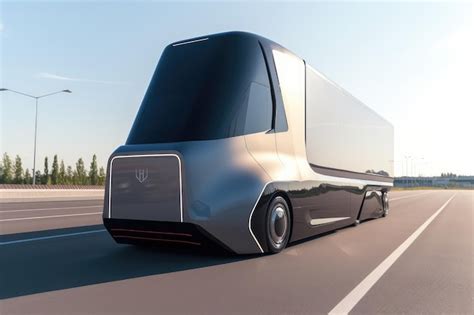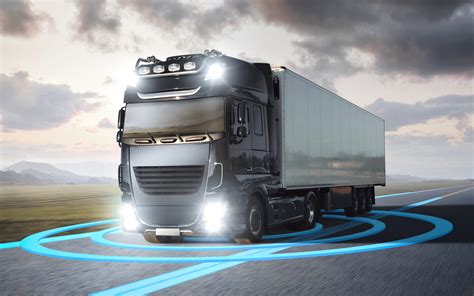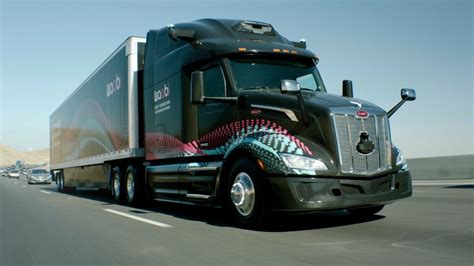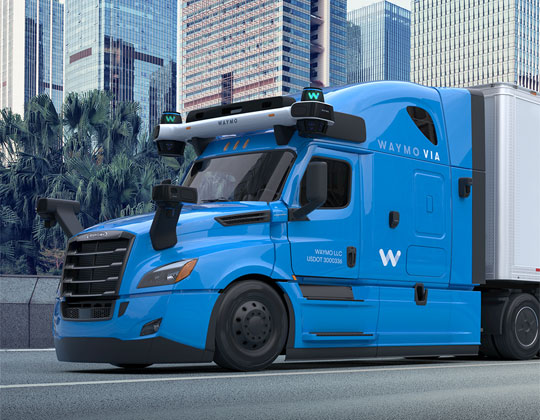The logistics and freight industry is undergoing a profound transformation driven by advancements in automation, artificial intelligence, and sensor technologies. At the heart of this revolution lies the autonomous truck pilot program a real‑world testing ground where self‑driving heavy vehicles navigate public roads under controlled conditions. These pilot initiatives promise to reshape supply chains, slash operational costs, and enhance road safety, all while laying the groundwork for fully autonomous commercial fleets. This article delivers an in‑depth exploration of autonomous truck pilots: their origins, technical foundations, key participants, regulatory frameworks, economic impacts, safety considerations, real‑world case studies, challenges, and the road ahead.
A. Evolution of Autonomous Truck Pilots
Before self‑driving rigs can move freight coast‑to‑coast, they must progress through structured pilot phases:
A. Concept Validation: Early research programs in closed test tracks validated sensor fusion, control algorithms, and braking systems.
B. Shadow Operations: Autonomous software “shadowed” human‑driven trucks, collecting data on lane keeping, obstacle detection, and traffic interactions without active control.
C. Assisted Driving Pilots: Level 2+ deployments where drivers retained ultimate control but benefited from hands‑off highway cruising and adaptive braking.
D. Supervised Autonomy: Level 4 trials permitting trucks to self‑navigate within geofenced corridors, with remote operators or safety drivers on standby.
E. Unsupervised Pilots: Emerging programs provisioning fully driverless platoons over limited highway segments under strict oversight.
B. Core Technologies and Architecture
The autonomous truck stack integrates multiple components working in concert:
A. Perception Sensors: LiDAR, radar, high‑resolution cameras, and ultrasonic sensors combine to create a 360° awareness bubble around the vehicle.
B. Sensor Fusion: Advanced algorithms merge raw sensor feeds into a unified environmental model, filtering noise and handling conflicting data.
C. Localization & Mapping: Real‑time GPS, inertial measurement units (IMUs), and detailed HD maps ensure centimeter‑level positioning on designated routes.
D. Path Planning: Predictive models chart optimal trajectories, accounting for traffic patterns, road geometry, and dynamic obstacles.
E. Control Systems: Drive‑by‑wire actuators manage steering, acceleration, braking, and platoon spacing with sub‑millisecond precision.
F. Connectivity: 5G or dedicated short‑range communications (DSRC) link trucks to remote operations centers, cloud analytics, and nearby vehicles.
C. Leading Pilot Participants
Several industry players are spearheading autonomous truck trials across the globe:
A. TuSimple: The U.S.‑China joint venture runs Level 4 pilots between Phoenix and Tucson, hauling freight 24/7 with minimal human intervention.
B. Waymo Via: Alphabet’s autonomous driving arm partners with UPS and ARC to deliver goods in Atlanta and Los Angeles under supervised autonomy.
C. Aurora Innovation: Collaborating with FedEx and Paccar, Aurora tests driverless Class 8 trucks on Texas interstate loops at night to mitigate traffic risks.
D. Embark Trucks: Focused on overnight desert runs in the Southwest, Embark’s autonomous rigs complete routes between Los Angeles and Phoenix.
E. Einride: Sweden’s electric, driverless “pods” operate on approved highways, demonstrating green logistics in Scandinavia’s low‑traffic corridors.
F. Plus.ai: Pilots in California and China leverage their AI Pilot system to transport refrigerated goods with a safety driver initially onboard.
D. Regulatory and Legal Frameworks
Autonomous truck pilots require close collaboration with regulators to ensure compliance and public safety:
A. Federal Exemptions: In the U.S., companies file for exemptions under Title 49 of the Federal Motor Carrier Safety Regulations to waive certain driver‑in‑cab requirements.
B. State Permits: States like Arizona, Texas, and Nevada have enacted bespoke AV pilot program rules, defining permissible routes, safety driver credentials, and reporting obligations.
C. Canadian Guidelines: Transport Canada’s pilot discussions emphasize insurance, data sharing, and cross‑provincial operations for driverless trucks.
D. EU Framework: Europe’s General Safety Regulation and UNECE WP.29 agreements provide technical standards for automated convoy systems and cybersecurity.
E. Liability Schemes: Insurance pools and manufacturer indemnity clauses address accident liability, product defects, and data privacy concerns.
E. Economic and Operational Benefits

Autonomous trucks promise to unlock significant value across multiple dimensions:
A. Labor Cost Reduction: Automated rigs can operate around the clock, reducing reliance on human drivers and associated labor shortages.
B. Fuel Efficiency: Platooning closely spaced convoys cuts aerodynamic drag, potentially improving fuel economy by up to 10 percent.
C. Asset Utilization: Higher uptime and minimized downtime increase trailer turns per week, boosting fleet productivity.
D. Predictable Schedules: Autonomous systems adhere strictly to digital schedules, minimizing delays caused by driver hours‑of‑service regulations.
E. Safety Savings: Fewer accidents translate into lower insurance premiums, reduced cargo loss, and a decline in vehicle repairs.
F. Safety Protocols and Performance Measures
Rigorous safety oversight underpins every pilot:
A. Safety Drivers & Remote Operators: Early trials employ licensed CDL drivers ready to intervene, while remote supervisors monitor live telemetry.
B. Redundant Systems: Dual‑path braking circuits, backup steering actuators, and fail‑safe power supplies ensure operation under component failures.
C. Performance Benchmarks: Metrics such as disengagement rates (manual overrides per mile), collision avoidance success, and false‑positive detection rates gauge system maturity.
D. Third‑Party Audits: Independent safety assessors review software logs, maintenance records, and incident investigations to validate compliance.
E. Public Reporting: Quarterly or annual safety reports filed with regulators increase transparency and guide policy evolution.
G. Real‑World Case Studies
Concrete examples illustrate pilot program progress and challenges:
A. Arizona Desert Corridor: TuSimple’s 200‑mile autonomous runs achieved over 1 million miles driven by 2024, with disengagements under 0.5 per 1,000 miles.
B. Georgia Logistics Hub: Waymo Via’s partnership with UPS moved pallets in suburban Atlanta, reducing idle time by 15 percent during peak operations.
C. Texas Night Runs: Aurora’s overnight freight hauls demonstrated 20 percent lower carrier costs per mile, due to reduced driver duty cycles.
D. Scandinavian Freight Pods: Einride’s electric pods navigated adverse weather conditions flawlessly, validating cold‑weather performance for future expansion.
E. Cross‑Border Trials: Plus.ai’s China‑U.S. pilot showcased interoperability challenges in standardizing digital maps and cellular networks across jurisdictions.
H. Technical and Operational Challenges

Despite progress, several hurdles remain before widescale deployment:
A. Edge‑Case Handling: Rare scenarios road construction, emergency vehicles, and erratic human drivers demand continual AI training and map updates.
B. Infrastructure Limitations: Inconsistent road markings, GPS shadows in urban canyons, and legacy bridges lacking weight sensors hinder autonomy.
C. Cybersecurity Risks: Connected trucks face threats from hacking, data tampering, and denial‑of‑service attacks, requiring hardened communication protocols.
D. Cost Barriers: Sensor suites and compute hardware add $200,000+ to unit costs, challenging ROI for large carriers.
E. Public Acceptance: Fear and distrust of driverless rigs on highways can spark regulatory pushback and community resistance.
I. Environmental and Social Impacts
Autonomous trucks also carry environmental and societal implications:
A. Emission Reductions: Electric autonomous trucks can eliminate tailpipe emissions, while improved fuel efficiency cuts CO₂ output for diesel models.
B. Congestion Mitigation: Smoother platooning and optimized routing may ease peak‑hour bottlenecks on major freight corridors.
C. Driver Workforce Transition: Upskilling programs are needed to shift long‑haul drivers into remote operations, fleet management, or maintenance roles.
D. Rural Access: Reliable freight services to remote areas may improve supply chains for agriculture and essential goods.
E. Data Privacy: Massive data collection video, location, and health of mechanical systems requires robust governance to protect stakeholder information.
J. Business Models and Commercial Rollout

Pilot successes pave the way for scalable offerings:
A. Service Contracts: Autonomous trucking-as-a-service (TaaS) agreements let shippers pay per mile without capital investment in vehicles.
B. White‑Label Solutions: OEMs license autonomy software to trucking firms, integrating with existing fleets under partner branding.
C. Fleet Partnerships: Collaborations between tech providers and major carriers like FedEx, DHL, and J.B. Hunt accelerate adoption through shared risk.
D. Leasing Models: Short‑term leases provide carriers access to autonomy tech without long‑term depreciation concerns.
E. Integrated Logistics Platforms: End‑to‑end digital ecosystems match cargo, route, and autonomous capacity in real time for maximum efficiency.
K. Future Outlook and Roadmap
The path from pilot to production hinges on continued innovation and collaboration:
A. Regulatory Harmonization: Unified federal guidelines and international standards will smooth cross‑state and cross‑border operations.
B. Cost Reduction: Economies of scale and sensor commoditization are expected to halve autonomy equipment costs by 2030.
C. Expanded Geofences: Pilots will grow from highways to mixed urban environments as perception algorithms mature.
D. Full Autonomy Rollout: By the mid‑2030s, many experts anticipate driverless freight lanes operating commercially on key routes.
E. Ecosystem Convergence: Autonomous trucks will integrate with smart highways, dynamic tolling systems, and renewable energy‑powered charging/refueling stations.
Conclusion
Autonomous truck pilot programs represent a pivotal stepping stone toward a future where self‑driving heavy vehicles deliver goods with unparalleled efficiency, safety, and sustainability. From early shadowing trials to supervised Level 4 deployments, these initiatives have validated key technologies, uncovered real‑world challenges, and forged partnerships between tech innovators, carriers, and regulators. As pilot zones expand, costs decline, and public acceptance grows, autonomous trucking is poised to revolutionize global logistics unlocking a new era of 24/7 freight mobility, reduced environmental impact, and reshaped workforce dynamics. Stakeholders who engage now in pilots, share data transparently, and invest in complementary infrastructure will lead this transformative journey, ensuring that the promise of driverless freight becomes a widespread reality.






